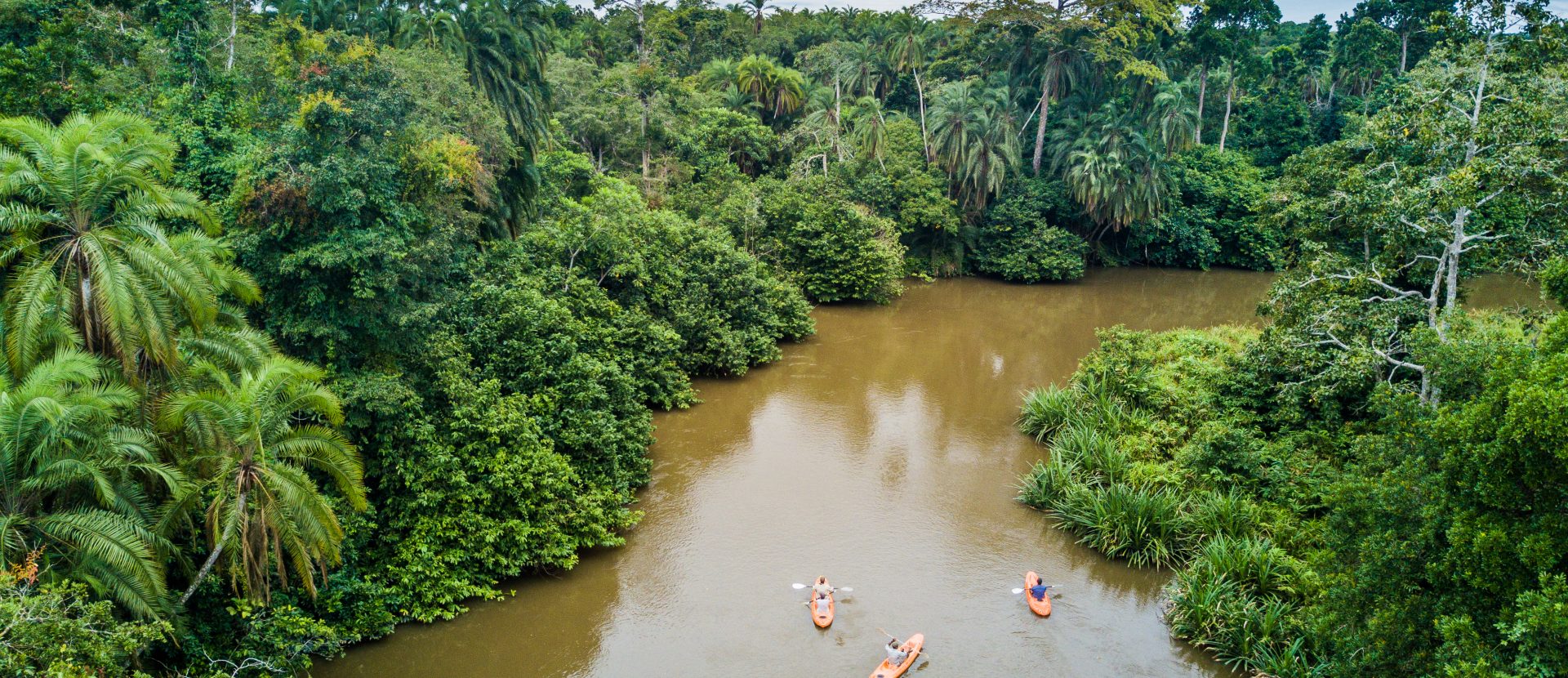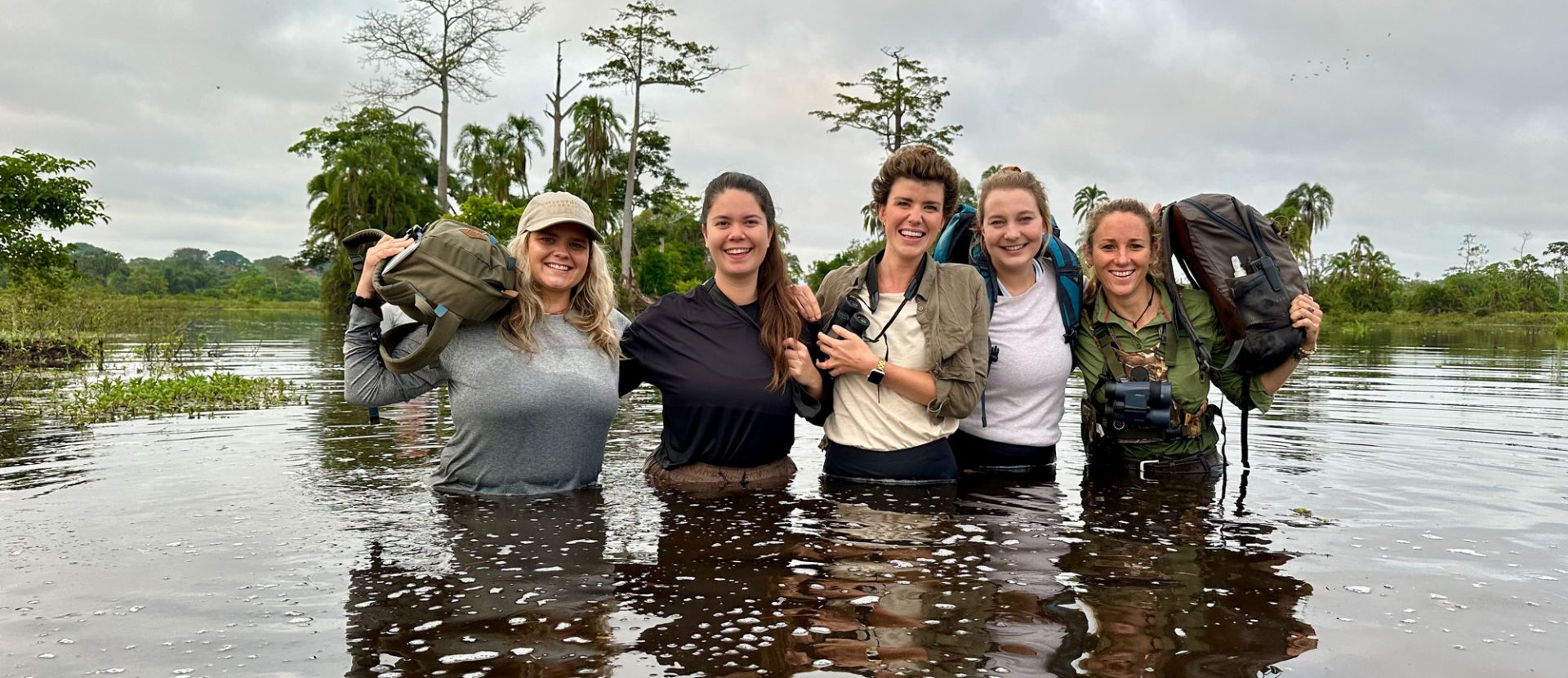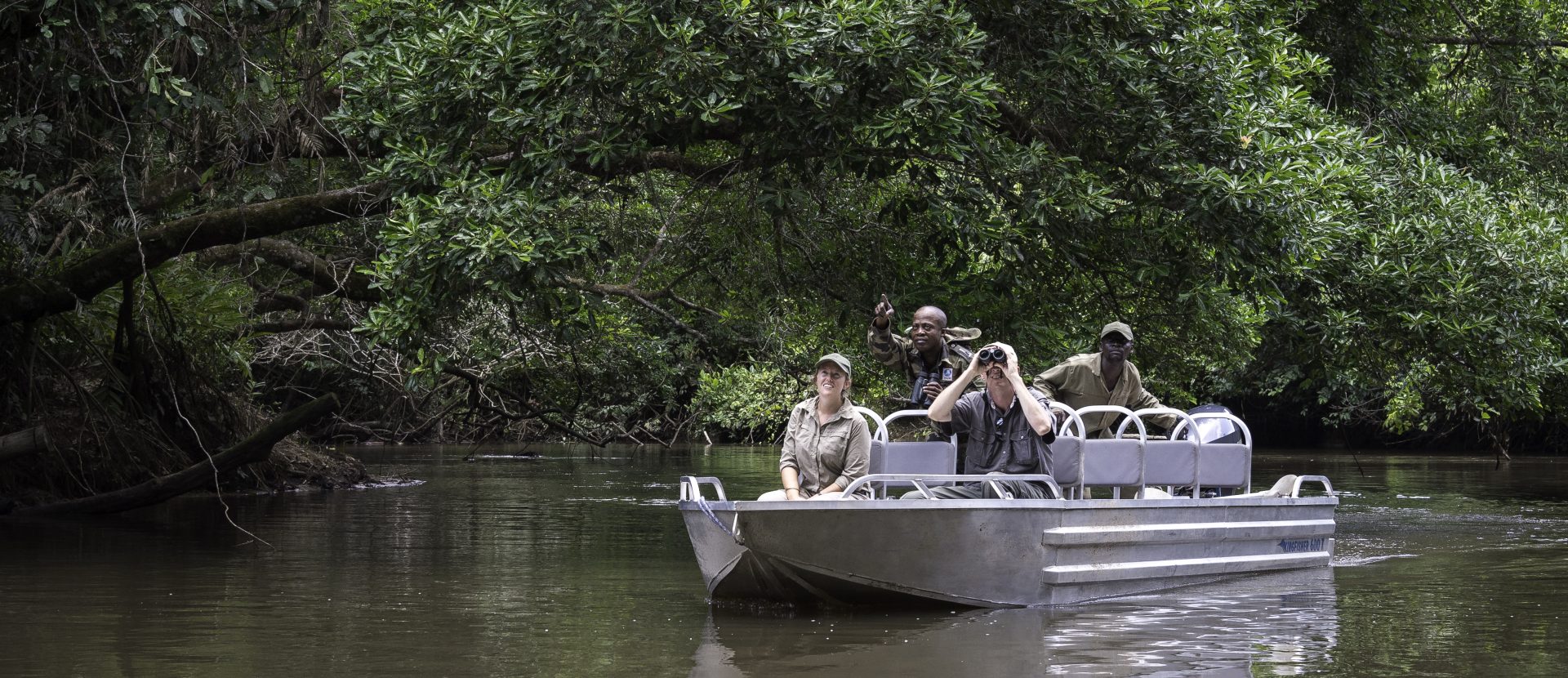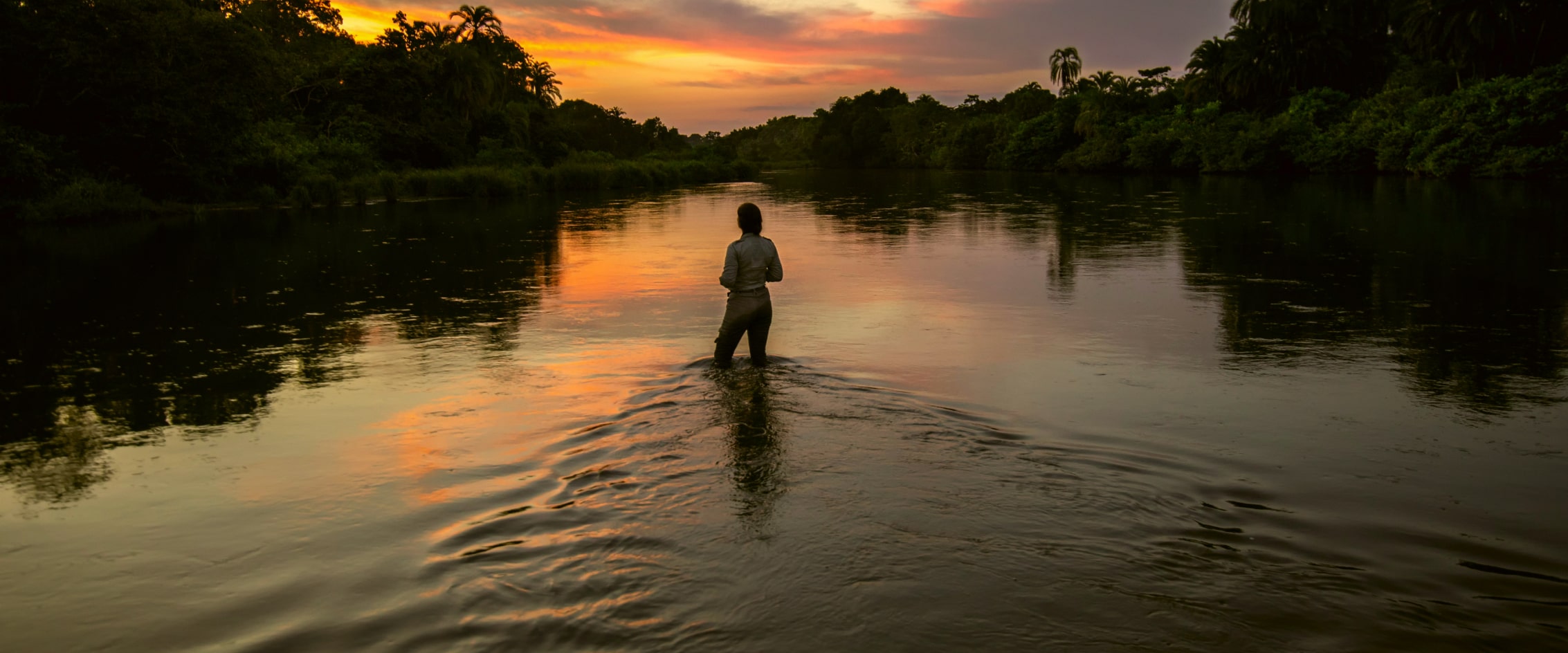
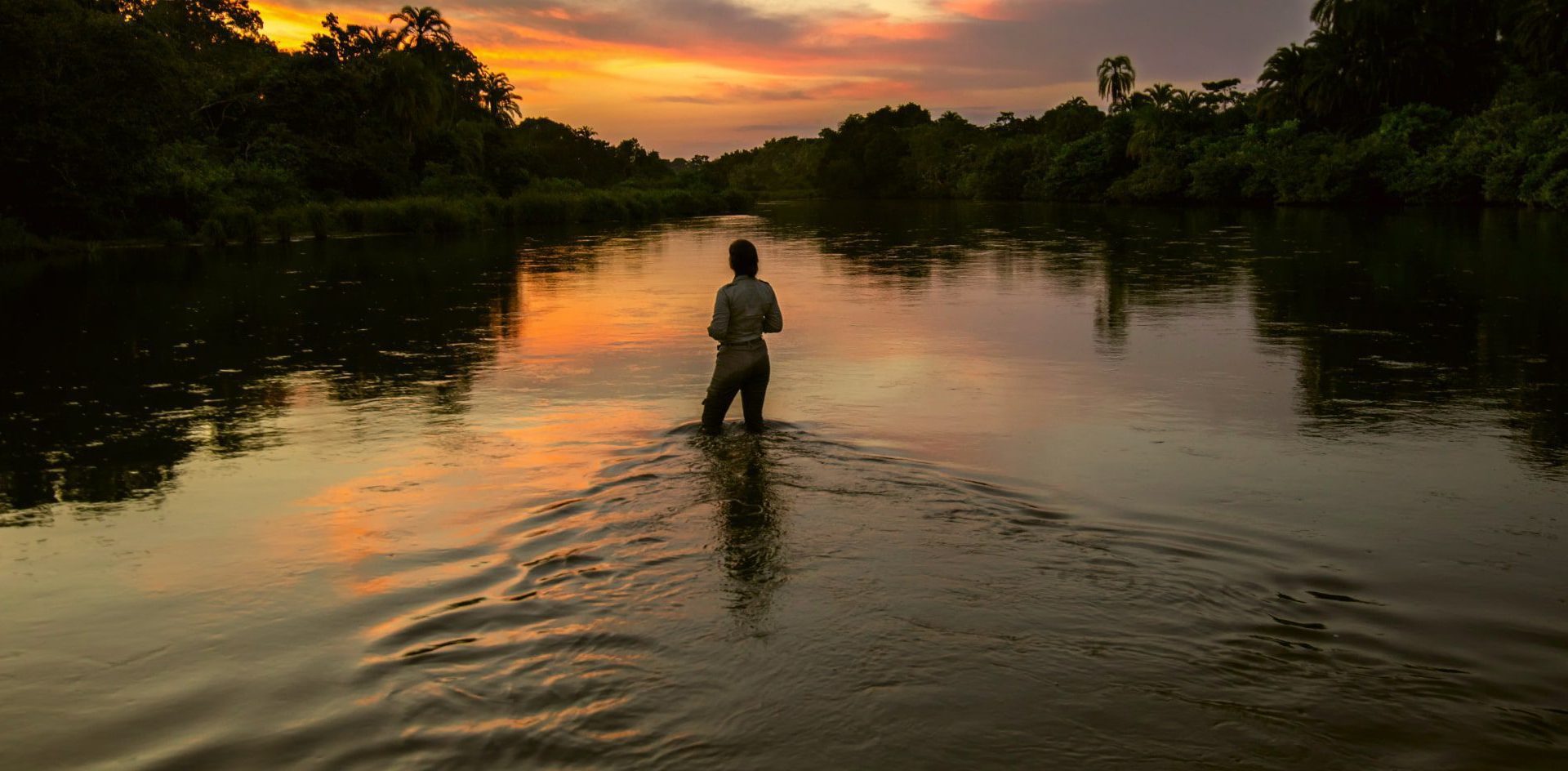
Adventure
No two Kamba Adventures are alike — each is tailored to your goals and adjusted for weather and other factors. That said, these few scenes sketch out a typical experience with us.
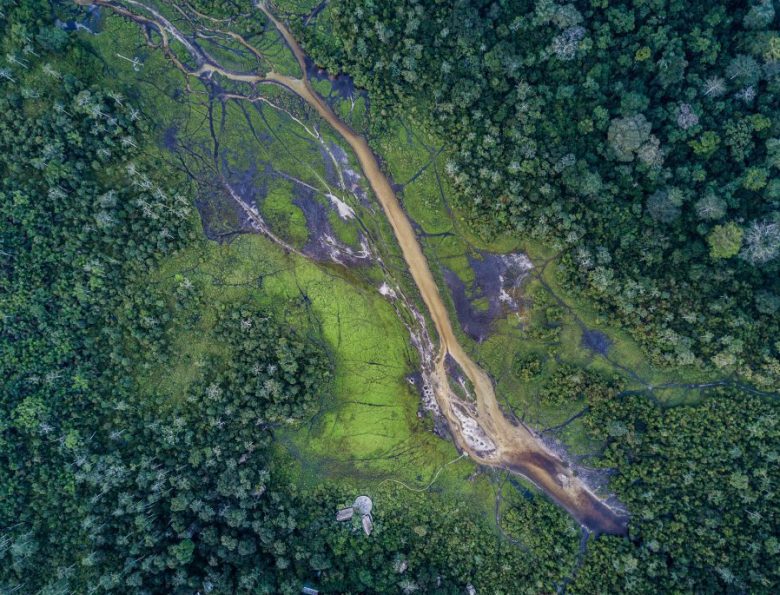
Welcome to the Jungle
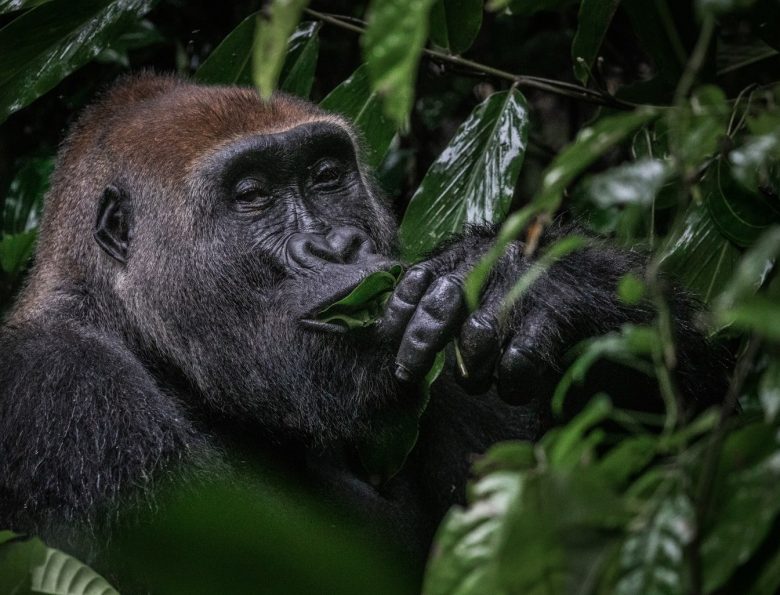
Gorillas in the Mist
You set out from Ngaga Lodge before dawn, headlamps piercing the darkness as you walk single-file through the dense foliage — just four of you, plus the guide and tracker. “We call this salad surfing,” chuckles the guide, slicing through the marantaceae leaves. The silence is broken only by the chirping of insects and the crunching of boots. After 30 minutes or so, Zepherin, the Ba’aka tracker, stops, cocks his head, and points up: There, on a high branch, a grayish figure emerges from the shadows: The silverback!
There are seven gorillas, in fact, spread across a single tree, 15 meters from where you stand. Their silhouettes appear dark against the morning mist, becoming more distinct as the sun brightens and your eyes adjust. You’re mesmerized. You put your camera down. You watch.
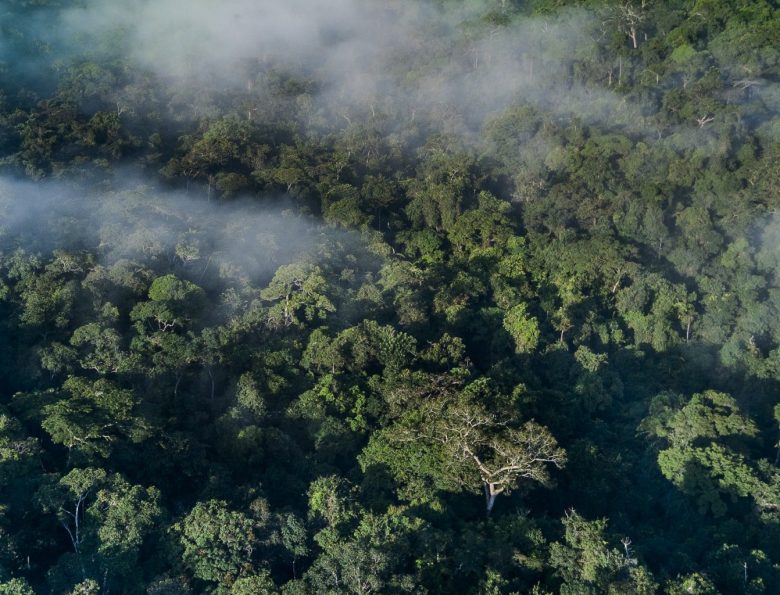
A Walk in the Forest
The camp manager hands you a refreshing iced tea and passes a platter of freshly baked cookies, the perfect fuel for your afternoon walk in the forest. You’re exploring just a tiny portion of the 80-km spider’s web of trails that surround Ngaga Lodge — the creation of the gorilla researchers and trackers based here.
The rich life of the forest makes itself known everywhere around you. A strangler fig spirals up a tree like a python. The loud, insistent call of a Great Blue Turaco sounds like something out of Jurassic Park. The guide points out a termite’s nest covering a tree trunk like shingles, nicknaming it “gorilla pizza” because the apes love to break off a piece and eat the insects inside. A thrashing overhead reveals a family of putty-nosed monkeys leaping among the treetops; the guide points out their chirps, yowls, and squawks — a lexicon of warnings about potential predators (like you!).
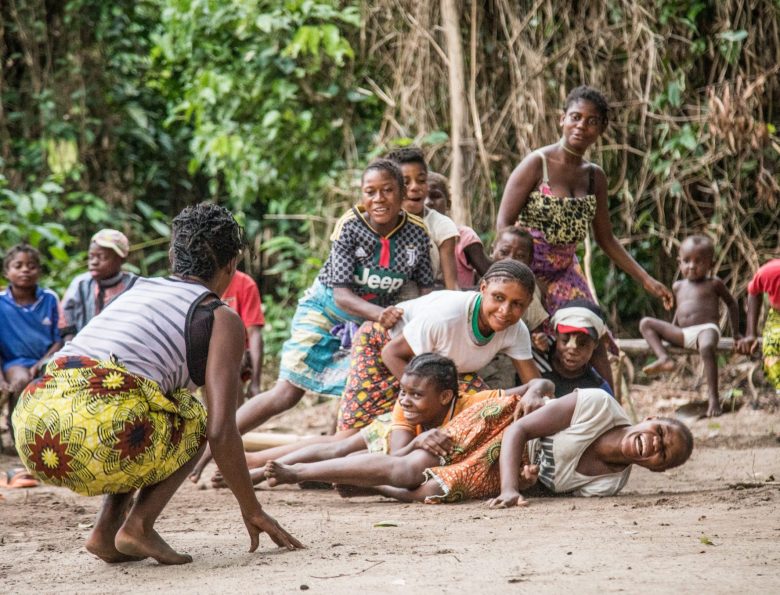
A Glimpse of Local Life
You and a few other guests are bouncing down the track in a Land Cruiser, traveling from Ngaga Lodge to the tiny village of Ombu. It’s small and simple, not much more than a cluster of thatch-roofed houses flanking the road. You gather in a gazebo, the locals looking bashful but intrigued as you ask questions of the village leader.
Where do the children go to school? (At Mbomo, a larger village up the road, where they spend the week before walking back here.) What does everyone do for work? (Many work for Kamba; some grow vegetables to sell to the lodges.) Where do they get water? (The women walk to a local stream, fill up tanks, and carry them home on their backs.)
All Kamba Experiences
